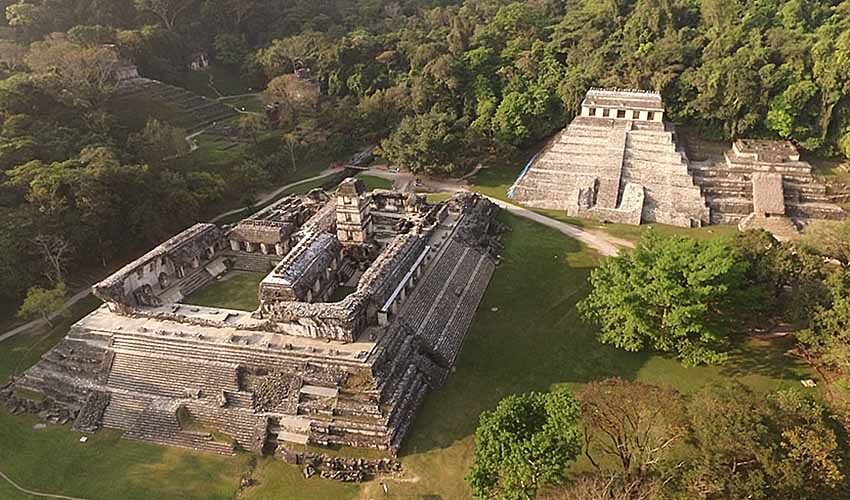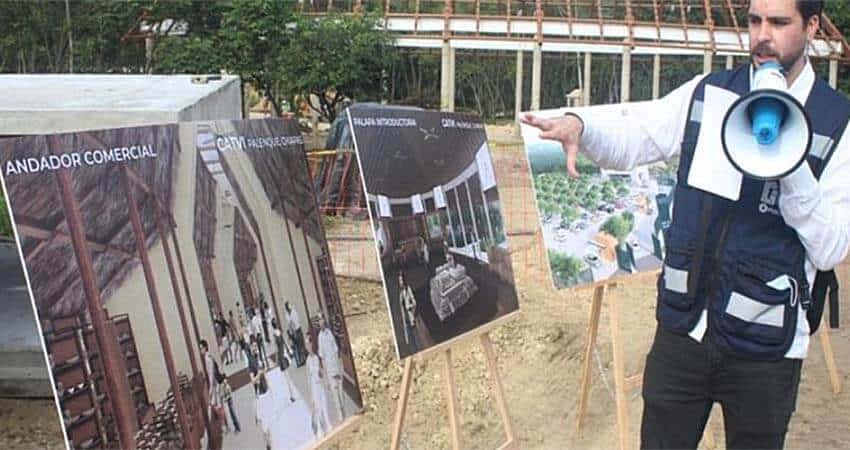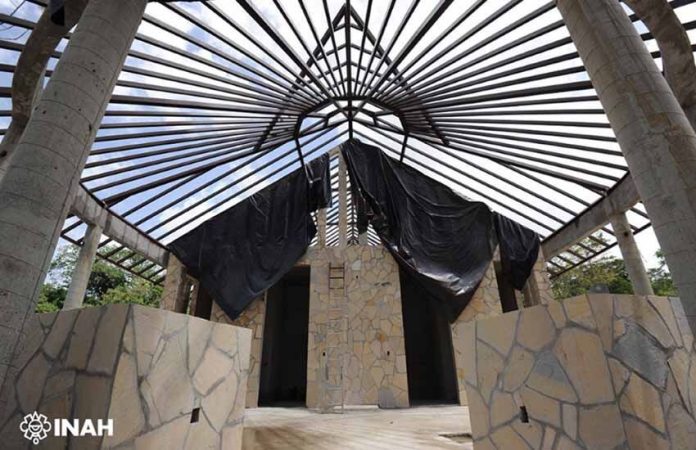Visitor centers are now under construction at some of the archaeological sites located near the route of the Maya Train railroad.
Chichén Itzá, Uxmal and Ek’ Balam in Yucatán and Palenque in Chiapas are among the sites that will get Visitor Attention Centers (known collectively as “CATVIs”), according to a statement published Monday by the Ministry of Culture.
The National Institute of Anthropology and History is supervising the construction of the centers, which are slated to enhance the experiences of archaeological site visitors, including Maya Train passengers who disembark to visit ancient Mayan cities in the five states — Tabasco, Campeche, Yucatán, Quintana Roo and Chiapas — through which the 1,500-kilometer railroad will run.
The US $10 billion railroad is expected to begin operations in 2023.

In its statement, the Culture Ministry provided an update on the construction of the Palenque archaeological site’s CATVI, located about nine kilometers from the town of Palenque, Chiapas. The center — which is being built three kilometers from the ancient city — is 55% complete, the ministry said.
The site where the center is being built was excavated between 1990 and 2000 and inspected again for ancient artifacts in 2021 before construction began. Carlos Varela Scherrer, a Palenque archaeological site official, said that last year’s inspection turned up just 40 ceramic shards, confirming that “there wasn’t an intense occupation of the area.”
Citing representatives from the private consortium building the Palenque-Escárcega stretch (Section 1) of the Maya Train railroad, the Culture Ministry said that the centers’ objective is to “optimize the visitor experience and to serve as development hubs for nearby communities.”
Juan Ignacio Roldán Suárez, chief engineer for the section 1 project, said that the Palenque CATVI will function as a “filter” for the archaeological area, a place where tourists can rest before and after visiting the ancient city.

The center’s design, inspired by traditional Mayan homes, will have parking for cars and buses, an “introductory module,” drinking fountains and washrooms that “converge at a Mayan arch,” the Culture Ministry said.
It also said the CATVI will be a sustainable building, noting that it will have its own water treatment plant and that its palm-leaf roof will have solar panels.
“With the support of biologists, we’ll create wildlife crossings and we’ll make sure that animals are not affected by power lines, bright lights or excessive noise,” Roldán Suárez said.
Over 100 residents of Palenque and nearby communities are working directly and indirectly in the construction of the CATVI, the Culture Ministry said. Palenque already has a site museum, where visitors can learn about the pre-Hispanic settlement and the Mayan people who occupied it.
Mexico News Daily
